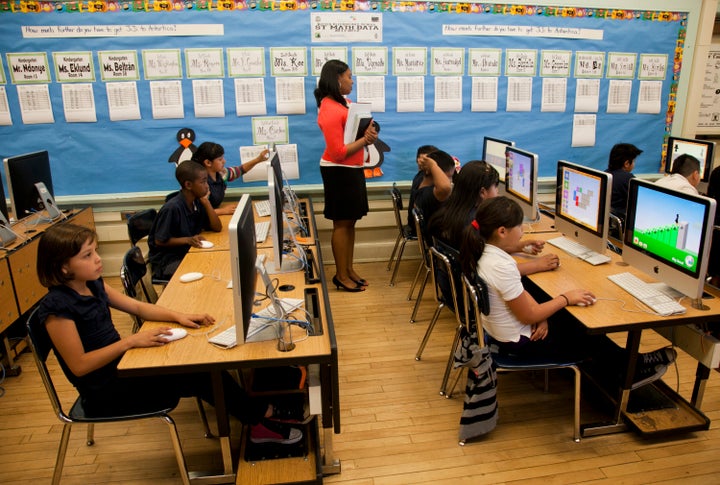
Small class sizes are crucial for learning at the younger grades, but may be less important as children mature, according to a new study.
The report, called "Smart Class-Size Policies for Lean Times" and released in March by the Southern Regional Educational Board, comes as state education departments have repeatedly cut costs by increasing class sizes, and when critics are questioning the significance of small classes and the success of liberal education reform policies.
Complicating matters is the high cost of reducing class size -- one of the most expensive education reforms. Lowering the nationwide average K-12 class size would cost $10 billion a year, the report finds. Furthermore, decreasing class size would require more teacher positions to be filled, and could lower average teacher quality in the process.
Noel Sheppard, for instance, notes in a NewsBusters op-ed that while the nationwide teacher to student ratio has increased over the past decades, test scores have not improved dramatically. Newsbusters is a project of the Media Research Center
"That's not something the Left and their media minions care to discuss as political leaders try to deal with budget deficits by cutting payrolls," he writes. "Yet the solution we constantly hear for declining test scores and graduation rates is ever more teachers."
Yet the SREB report cautions against expanding class sizes at the lower levels, where effects of class size on student achievement are greater.
"Research shows that students perform better in small classrooms, especially in kindergarten through third grade" according to the news release.
Although the public tended to choose larger classes with better teachers over smaller classes with average teachers, researchers note that if policymakers must increase class sizes to cut costs, the larger classes should be implemented in high schools, where class sizes have not yet proven to be a key factor in academic performance.
While figures pulled from the U.S. Department of Education show that teacher-student ratio declined from 22.3 in 1970 to 15.3 in 2008, nationwide reports have indicated a surge in class size in the last couple years, since the onset of the recession. A Texas teacher reported a high school class with 50 students last year. A Las Vegas elementary school kindergarten class had 41 students.
Even President Obama has been asked to weigh in on the class size debate.
On May 25, Leonie Haimson, the executive director of Class Size Matters, wrote an open letter to President Obama requesting that he "rein in" Education Secretary Arne Duncan for defending "smartly targeted increases in class size" in a 2010 speech.
"If you respect the priorities of parents and teachers as well as the best education research," Haimson writes, "You will immediately restore the $620 million in your budget that districts can use for class size reduction."
Recent attention to class size and teacher hirings come amid debate over Mitt Romney’s comments regarding Obama’s calls for Congress to make more of an effort to retain teachers, among other public sector professions.
Romney attempted to diffuse the situation Tuesday while appearing on Fox and Friends. He said it was "completely absurd" to accuse him of being opposed to hiring teachers, noting that it was up to state and local governments to make those decisions, not the president.